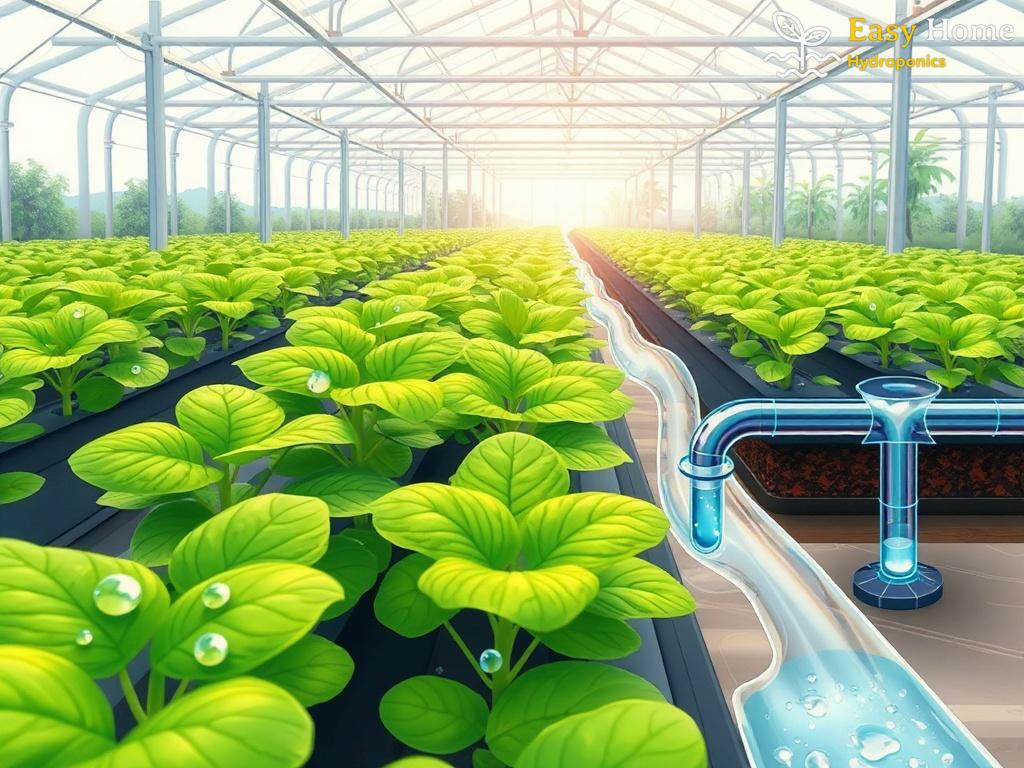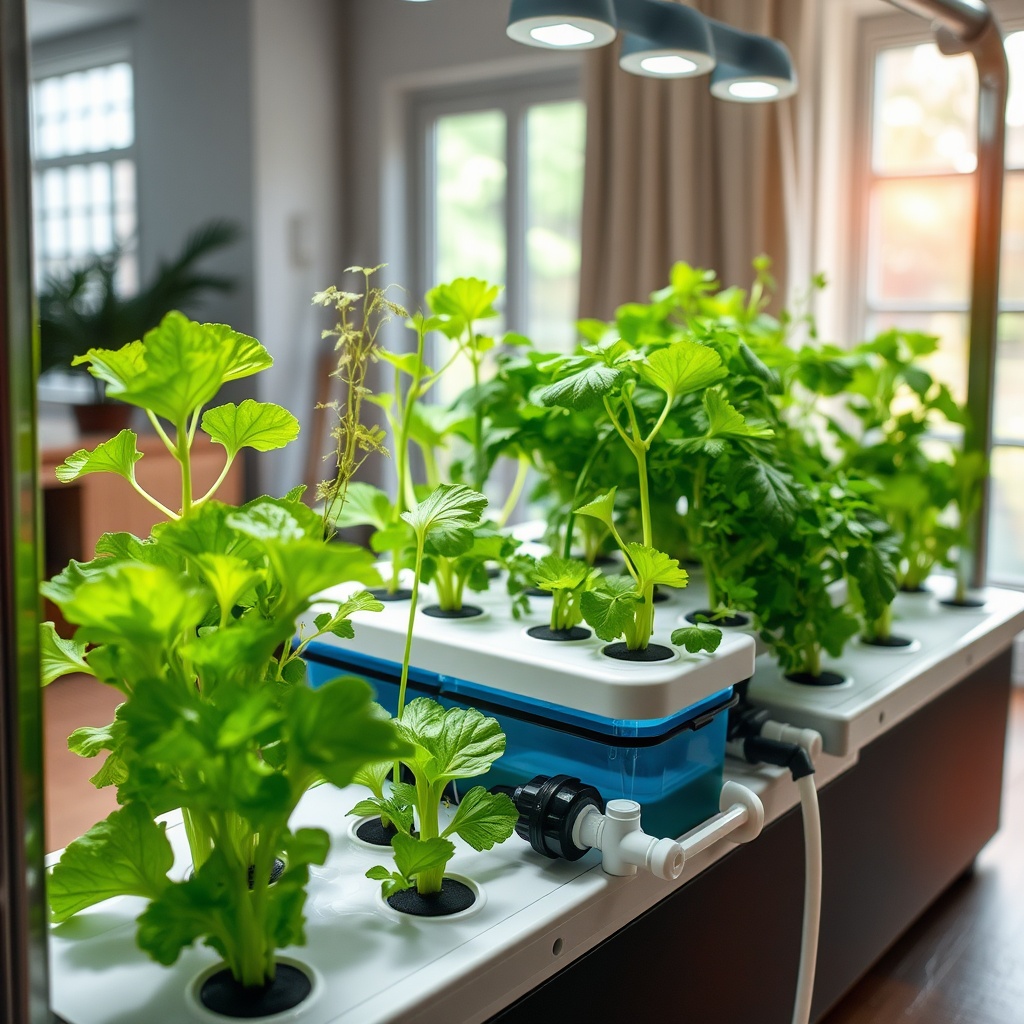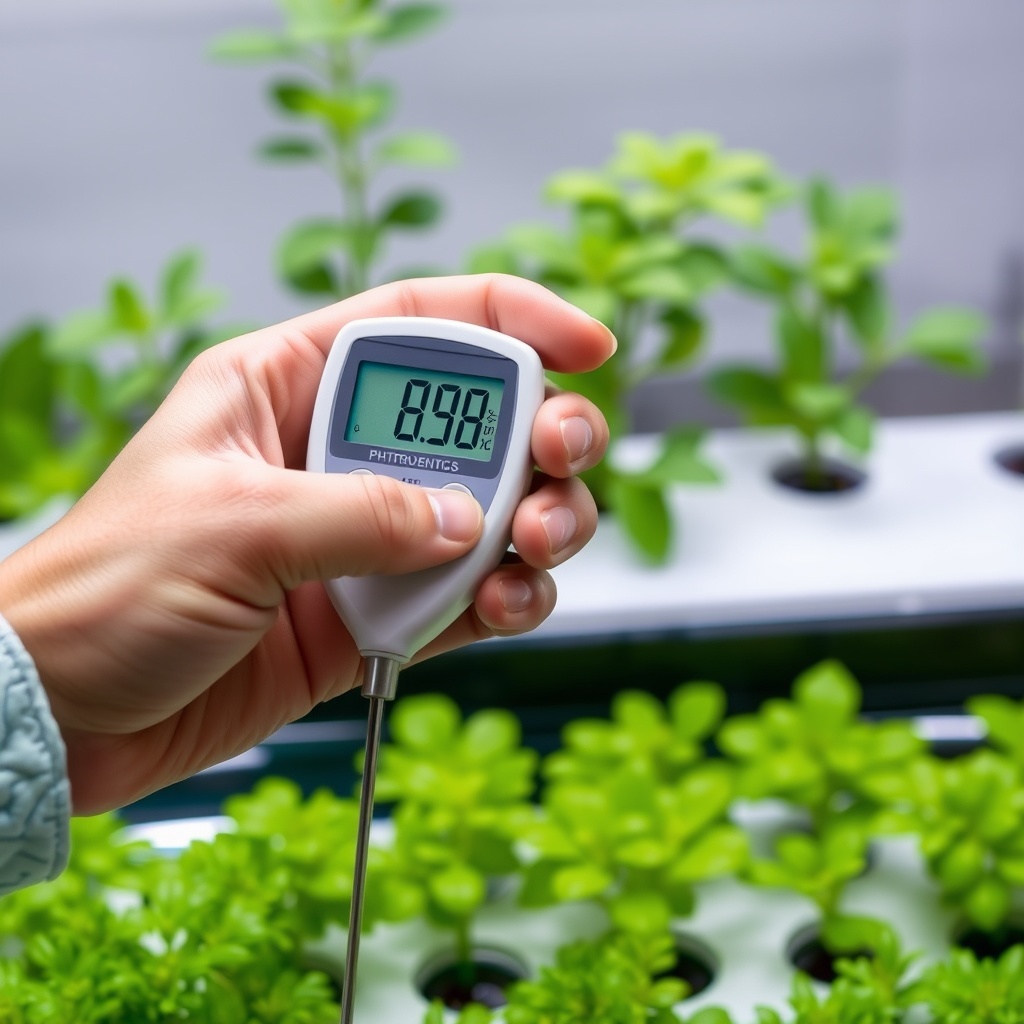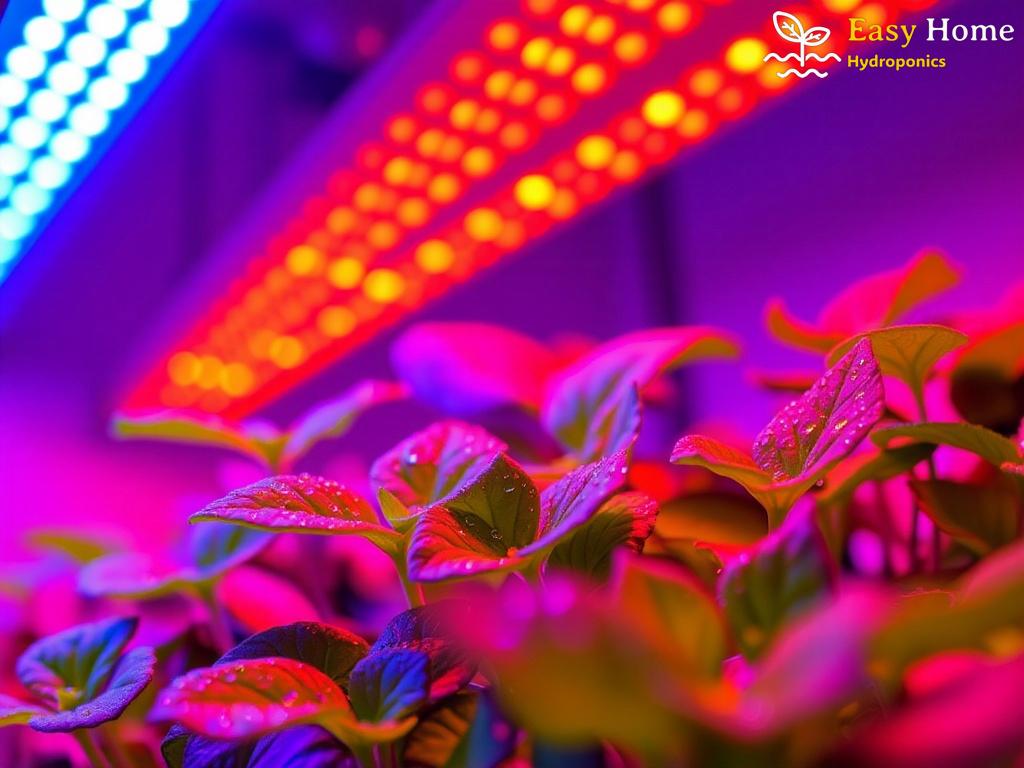The Science Behind Transpiration: How Plants Drink
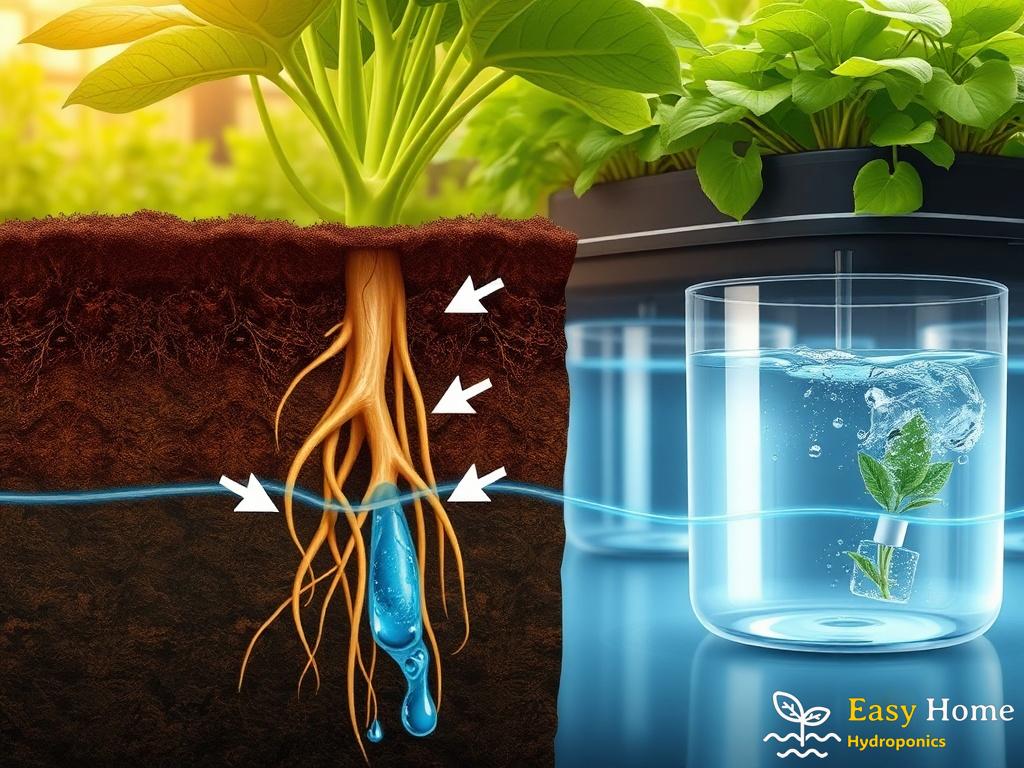
Water is essential for life, and plants are no exception. But have you ever wondered how plants transport this vital resource? Especially in hydroponics, where soil is absent, understanding the mechanisms of water movement is crucial. Let’s delve into the fascinating process of transpiration, which not only quenches plants’ thirst but also plays a significant role in nutrient uptake and climate regulation.
Transpiration is the process through which plants lose water vapor from their leaves. This loss creates a negative pressure within the plant, effectively drawing more water up from the roots through the xylem. But how does this process work?
- Stomata: Tiny openings on the leaf surface that allow for gas exchange and water vapor release.
- Xylem: Specialized tissue that transports water and nutrients from the roots to the leaves.
- Water Potential: The driving force behind water movement, influenced by factors like soil moisture and atmospheric conditions.
In hydroponics, where water is recirculated and carefully managed, understanding these mechanisms can lead to healthier plants and higher yields. Transpiration not only helps in nutrient uptake but also cools the plant, preventing overheating.
It’s easy to confuse transpiration with evaporation, but they are distinct processes. While both involve water vapor escaping into the atmosphere, transpiration is a biological process specific to plants, whereas evaporation can occur from any surface, including soil and water bodies.
| Aspect | Transpiration | Evaporation |
|---|---|---|
| Definition | Water vapor loss from plant leaves | Water vapor loss from any surface |
| Process Type | Biological | Physical |
| Location | Primarily in leaves | Any exposed surface |
| Influencing Factors | Stomatal openings, humidity, temperature | Temperature, wind, surface area |
This understanding is particularly important for hydroponic systems, where maintaining optimal humidity and temperature levels can dramatically affect plant health and growth.
Hydroponics vs. Soil: The Transpiration Advantage
When it comes to cultivating plants, the method of growth can significantly influence their health and productivity. Among the various techniques, hydroponics stands out, particularly in how it enhances the process of transpiration. Unlike traditional soil-based growing methods, hydroponics offers a controlled environment that optimizes water and nutrient delivery. This leads to a more efficient transpiration process, which is critical for plant development.
The ability of plants to effectively use water is paramount for their survival and growth. Hydroponics systems provide a constant supply of moisture directly to the plant roots, which is significantly advantageous compared to soil cultivation. In soil, water must navigate through various layers, which can lead to uneven distribution and potential drought stress. However, in hydroponics, the roots are immersed in nutrient-rich water, allowing for rapid uptake and minimizing the risk of water deficiency. This constant hydration not only supports transpiration but also boosts nutrient absorption, resulting in healthier plants.
Another compelling aspect of hydroponics is the level of environmental control it offers. In soil-based systems, external factors such as weather conditions, soil type, and moisture levels can disrupt the process of transpiration. However, hydroponic systems allow growers to regulate humidity, temperature, and light exposure, creating an optimal microclimate for plants. This controlled environment can enhance transpiration rates, helping plants to cool themselves more efficiently while maintaining robust growth. The ability to adjust these variables is particularly beneficial in regions where climate conditions are less than ideal.
Moreover, the absence of soil means that hydroponic plants can focus their energy on producing foliage and fruits rather than developing extensive root systems to search for water. This shift in energy allocation significantly improves growth rates and yields. The advantages of hydroponics in facilitating efficient transpiration not only lead to healthier plants but also provide an opportunity for growers to maximize their harvests.
Factors Influencing Transpiration Rates in Hydroponics
In the meticulous world of hydroponics, humidity levels play a pivotal role in determining how efficiently plants transpire. When humidity is high, the concentration gradient between the moisture inside the leaf and the surrounding air diminishes, slowing down the rate of transpiration. This can lead to an accumulation of water vapor within the growing environment, which might seem beneficial but can actually hinder nutrient uptake. Conversely, low humidity can enhance transpiration, creating a higher demand for water uptake from the roots. This delicate balance is crucial for maintaining optimal plant health and maximizing growth potential.
The temperature within a hydroponic system significantly influences transpiration rates. Warmer temperatures can boost the kinetic energy of water molecules, leading to increased evaporation from the leaf surfaces. However, excessive heat can also lead to stress, causing plants to close their stomata to conserve water, which in turn reduces transpiration. Thus, growers must remain vigilant, monitoring temperature fluctuations and implementing cooling strategies, such as misting or fan systems, to create an ideal environment for plant transpiration. Maintaining a steady and moderate temperature not only enhances transpiration but also promotes nutrient absorption, ultimately resulting in vigorous plant growth.
The intensity and quality of light received by hydroponic plants can dramatically affect their transpiration rates. Light is a driving force behind photosynthesis, and as plants convert light energy into chemical energy, they also release water vapor in the process. Bright light conditions typically encourage higher rates of transpiration, as plants work to cool themselves and maintain homeostasis. However, it is essential to balance light exposure, as excessively intense light can lead to overheating and increased water loss. Growers should experiment with different light spectrums and intensities to find the sweet spot that optimizes both photosynthesis and transpiration, setting the stage for thriving plants.
Optimizing Airflow: The Key to Healthy Transpiration
In the intricate realm of hydroponics, airflow emerges as a crucial element that significantly influences the transpiration process. While water and nutrients are often at the forefront of discussions, the movement of air around the plants can make or break their ability to effectively transpire. Let’s explore how optimizing airflow not only enhances transpiration rates but also contributes to the overall vitality of hydroponic systems.
Air circulation within a hydroponic setup facilitates the exchange of gases, primarily oxygen and carbon dioxide, essential for photosynthesis and respiration. As plants transpire, they release water vapor into the air, creating a microclimate around their leaves. If this moisture is not efficiently removed, it can lead to a stagnant environment, slowing down the transpiration process. Implementing effective airflow strategies ensures that water vapor is quickly dispersed, allowing for a higher rate of transpiration. By improving air circulation, plants can maintain their cooling mechanisms and nutrient uptake, resulting in improved health and productivity.
Humidity plays a pivotal role in the transpiration process, and here, airflow takes center stage. In a hydroponic environment, high humidity can inhibit transpiration by reducing the concentration gradient between the leaf’s internal moisture and the surrounding air. Proper airflow helps regulate humidity levels, enabling moisture to dissipate more effectively and keeping the plants in their optimal transpiration zone. By deploying fans or ventilation systems, growers can create a dynamic airflow that maintains humidity within a desirable range, promoting healthy transpiration and preventing issues like mold growth.
To achieve optimal airflow, several strategies can be employed. Positioning fans at strategic locations within the hydroponic system ensures that air is evenly distributed, preventing any stagnant pockets that could hinder transpiration. Additionally, using oscillating fans can create a gentle breeze that mimics natural conditions, promoting leaf movement and enhancing transpiration rates. Furthermore, incorporating air exchange systems can help maintain fresh air circulation, supplying plants with the carbon dioxide they need for photosynthesis while removing excess humidity.
Ultimately, understanding the interplay between airflow and transpiration in hydroponics allows growers to maximize their systems’ efficiency. By focusing on this often-overlooked aspect, they can cultivate healthier plants that not only thrive but also produce impressive yields.
Measuring Transpiration: Tools and Techniques for Success
In the world of hydroponics, where every drop of water counts, understanding the transpiration process is essential for cultivating healthy and productive plants. Measuring transpiration not only provides insight into a plant’s water needs but also serves as a vital indicator of overall plant health. As hydroponic systems thrive on precision and efficiency, employing the right tools and techniques to assess transpiration can lead to remarkable improvements in growth and yield.
Among the various methods available, the potometer stands out as a favored tool for measuring transpiration rates. This ingenious device allows growers to quantify the amount of water a plant loses through its leaves. By connecting a plant stem to a graduated tube filled with water, the potometer captures water movement as it is absorbed by the plant and subsequently transpired into the atmosphere. As water vapor escapes through the stomata, the drop in water level in the tube provides a direct measure of transpiration, making it a straightforward yet effective technique.
In addition to potometers, infrared gas analyzers (IRGA) have gained traction in modern hydroponic practices. These sophisticated instruments offer a more advanced approach by measuring the concentration of water vapor in the air surrounding the plant. By analyzing the differences in vapor concentration, growers can calculate transpiration rates with remarkable accuracy. This method is particularly beneficial for larger hydroponic operations, where monitoring multiple plants simultaneously is crucial for maintaining optimal conditions.
For those looking for a more holistic view of plant health, leaf weight measurements can be an invaluable tool. By weighing leaves before and after a specific duration, growers can assess the water loss and thereby infer transpiration rates. This technique, while simpler, can be quite effective when combined with environmental monitoring, providing a comprehensive picture of how plants respond to varying conditions.
As we explore these methods, it becomes evident that the choice of technique may depend on several factors, including the scale of the hydroponic operation, the species of plants being cultivated, and the specific goals of the grower. However, one thing is certain: accurately measuring transpiration is a cornerstone of successful hydroponic gardening, and the insights gained from these practices can lead to healthier plants and bountiful harvests.

